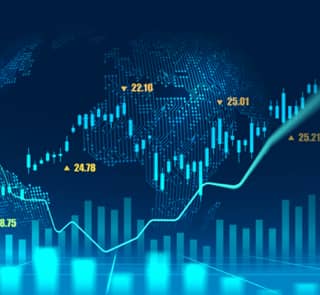Thinking of 2018, there is quite a buzz about the new trends that are going to dominate the Business Intelligence (BI) market-space. Artificial Intelligence (AI), Analytics, Big Data, Cloud Computing, Data Visualization, Self-Service BI, Internet of Things (IoT), Industrial Internet of Things (IIoT) ……… we have heard a lot about these technologies, but which ones will make waves in 2018?
TekLink has a unique perspective on BI trends and where we see things are headed. We work tirelessly with our clients to resolve their business challenges and this gives us industry insights and helps us anticipate the trends. Here’s what our experts foresee coming in 2018:
1. Advanced and predictive analytics will continue to dominate business applications
Advanced and predictive analytics offers an immense potential in terms of return on investment in BI applications leveraging a wide array of data storage structures including big data. The companies that leverage the data best will gain profitability and competitive advantage. All decisions based on data-driven analysis will drive better business decisions.
2. Data engineers will be coming into organizations
Sound data-driven decisions can only happen if the data is correct. Without sufficient data quality, data is practically useless and sometimes even dangerous leading to the wrong conclusions. Not only is data quality an issue but location of where the data is placed has become an area of interest for maximum performance while being cost effective. We hear the buzz about data scientists in the industry, but we see another title getting traction – Data Engineer. Data engineers write code being highly analytical and interested in data visualization. They build tools, infrastructure, frameworks and services. Data engineering is much closer to software engineering than it is to data science. Watch for the data engineers title getting some buzz in the news and social media.
3. Industrial IoT (IIoT) applications will become mainstream
IIoT applications will explode in all industries but a few will dominate. Top industries will be centered around manufacturing operations (Manufacturing), freight monitoring (Transportation), smart grid (Utilities), smart home (Consumer Goods), telematics (Insurance), remote health monitoring (Healthcare) and digital signage (Communications). IIoT applications will improve the quality of our lives for many years to come.
IDC quotes that global spending on the IoT will reach $1.29 trillion in 2020.
4. Public cloud first strategy will be adapted
Public cloud first strategy will become more commonly adapted to control costs and provide more flexibility than on-premise solutions. These new cloud applications often will not replace existing traditional processes, but they will fill a need for exploiting new solution areas not ever explored.
5. Data visualization factory will emerge to better utilize internal software investments
A visualization factory strategy will provide a framework to leverage existing data visualization tools implemented by an expert team of data visualization specialists. The visualization factory can be staffed by internal specialists or external consultants giving internal business users the means to speed up the process of business application development by using the right data visualization tool in a cost-efficient model.
6. Natural Language Processing (NLP) will become more prominent
Natural Language Processing is going to become a more prominent component of BI/Analytics and perhaps at some point even make its way into Enterprise Performance Management (EPM) solutions (I’ve heard of some EPM vendors that are already investing R&D into this). Take our TekLink partner Prevedere for example. One of the key components to drive value is the ability to introduce external data, which is part and parcel to Prevedere’s service. The ultimate objectives of a Big Data initiative are most commonly prescriptive and predictive analytics. The next logical step to me for a solution like Prevedere or any analytics solution would be for the user to be able to use human language to ask the system, “What is my volume forecast if I increase my price by 10%” or “how much would demand change if the unemployment rate goes up .2%”, etc. I’m not saying this is going to be something that ends up in production at a lot of companies in 2018 but I believe we’re going to start hearing a lot more marketing spin about these type of solutions.
7. Big data applications will slowly be adopted
Why is big data not being universally accepted in mainstream applications? Often new big data applications are put through an extensive cost benefit analysis which more than not gets killed before the application ever gets off the ground. Big data opportunities tend to be new areas not explored before and the predictability of success is not always seen or realized from the first implementation. Companies that have an entrepreneurial approach for big data applications will stand to benefit the most. A small amount of investment budget in areas not usually pursued might give the greatest rewards. Dare to try something different and new! Try, fail, then try again!
8. Improving planning accuracy will always be in demand
For those companies using SAP technology for planning and consolidation, SAP BPC Standard will be the preferred planning tool for large organizations for many years to come. SAP BPC Standard will give our clients more user financial freedom easily leveraging investments in SAP HANA, several BI frameworks (BI and BW/4HANA) and other legacy databases. SAP has also committed to supporting BPC 11 release.
Now that you heard from our TekLink experts, we would like to know your thoughts. Do you think any other major trend will emerge in 2018? Share your comments now.
Looking forward to what the future will bring!







